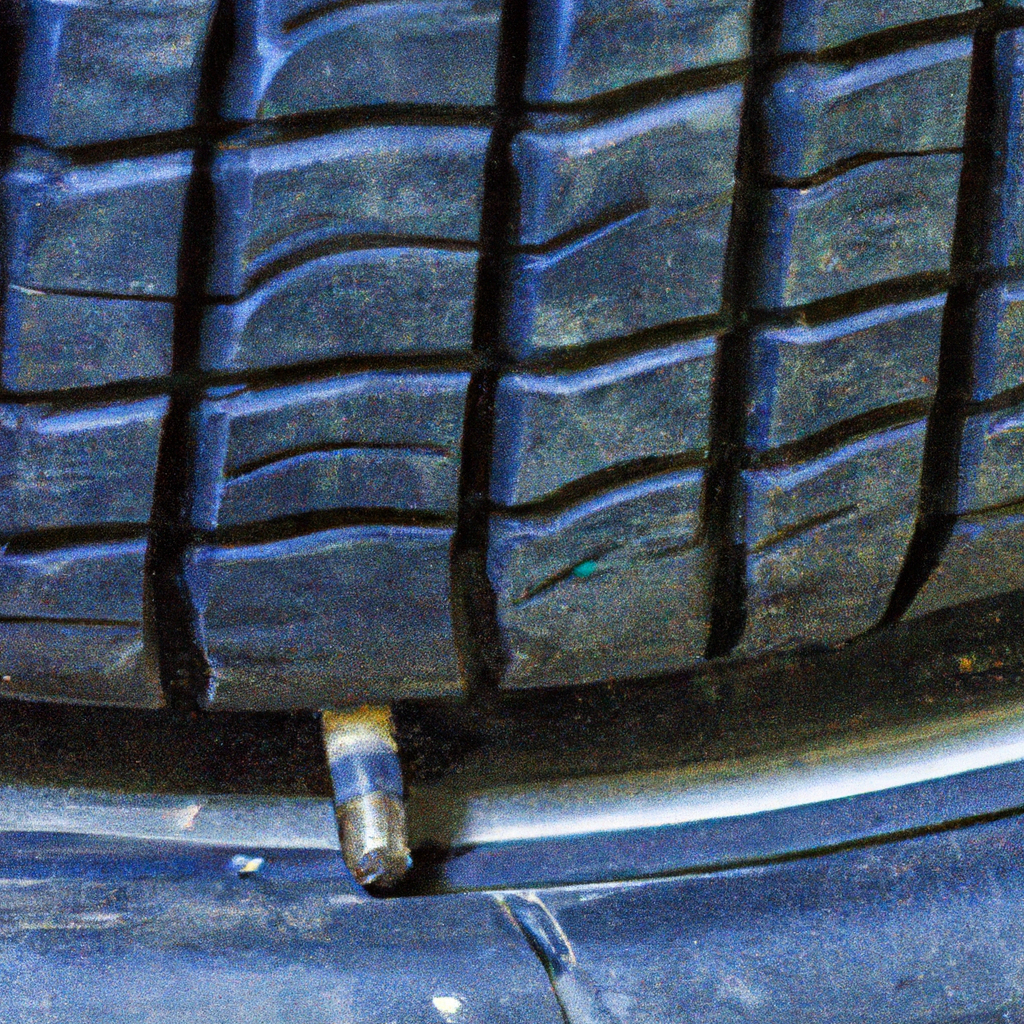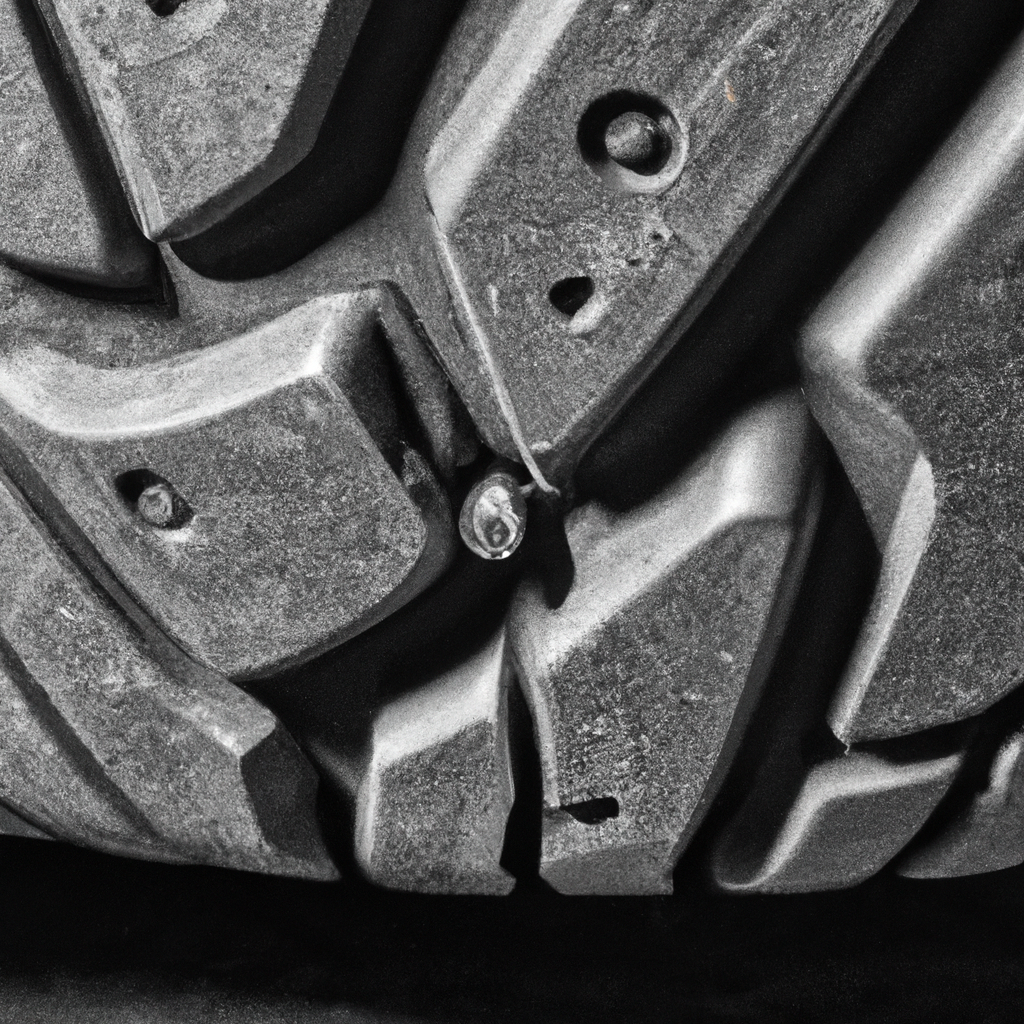If you find yourself in the frustrating situation of a leaking tire valve stem, fear not! This article is here to help you navigate through this common issue. We’ll discuss simple steps you can take to address the problem and ensure your tire is back to its optimal condition in no time. So, let’s get ready to tackle that pesky leak together!

Determine the Cause of the Leak
Check the valve stem cap
If you notice that your tire is losing air, the first thing you should do is check the valve stem cap. Sometimes, the leak can be as simple as a loose or missing valve stem cap. This cap serves as a protective cover, preventing dirt and debris from entering the valve stem. If it is loose or missing, it can cause air to escape from the tire. By inspecting and tightening or replacing the valve stem cap, you might be able to fix the leak without any further intervention.
Inspect the valve stem for damage
If the valve stem cap is secure, the next step is to inspect the valve stem itself for any visible signs of damage. Take a close look at the rubber component of the stem and check for cracks, tears, or any other signs of wear and tear. Additionally, ensure that the valve stem is properly and tightly screwed onto the tire’s rim. If you notice any damage or a loose stem, it could be the source of the leak. In such cases, more extensive repairs or replacements may be necessary.
Check for corrosion or debris
Corrosion or debris can also contribute to a leaky valve stem. Over time, moisture and exposure to the elements can cause the valve stem to corrode, leading to air loss. Similarly, foreign objects such as dirt, rocks, or metal shavings can obstruct the valve stem, preventing it from sealing properly. Carefully inspect the valve stem for signs of corrosion or any debris that might be present. Cleaning the valve stem and removing any obstructions can sometimes fix the leak.
Immediate At-Home Solutions
Add sealant to the tire
If you’re looking for a quick fix to temporarily seal the leak, adding a tire sealant can be a viable solution. Tire sealants, which are readily available at most automotive stores, work by sealing small punctures or leaks in the tire tread. They are typically injected directly into the tire through the valve stem. The sealant then spreads throughout the tire, coating the inner surface and sealing any leaks it comes into contact with. While this may provide a temporary solution, it’s important to remember that it may not be a long-term fix and should be used as a last resort.
Tighten the valve core
The valve core is a small, removable component located inside the valve stem. It plays a crucial role in maintaining the seal and controlling the airflow in and out of the tire. If the valve core becomes loose, it can cause air to leak from the tire. To determine if the valve core is the cause of the leak, use a valve core tool to tighten it. This tool enables you to easily remove the valve core, tighten it, and then reinsert it securely. By tightening the valve core, you may be able to restore the seal and prevent further air loss.
Replace the valve stem
If the above solutions do not resolve the leak, it might be necessary to replace the valve stem. This is a more involved process that requires special tools and expertise. Before attempting to replace the valve stem, it is recommended to consult a professional or refer to your vehicle’s manual for guidance. A new valve stem can be purchased from an auto parts store or tire shop. To replace the valve stem, the tire must be partially or fully deflated, and the old stem removed before installing the new one. This option is best suited for those comfortable with DIY repairs or for individuals with prior experience in tire maintenance.

Temporary Fixes on the Road
Use a tire plug kit
If you find yourself with a leaking valve stem while on the road, a tire plug kit can be a useful temporary solution. These kits typically include self-vulcanizing cords or plugs that can be inserted into the punctured area to seal the leak. To use a tire plug kit, locate the leak and follow the instructions provided in the kit. It usually involves reaming the hole with a tool, inserting the plug, and trimming off any excess material. Keep in mind that tire plug kits are designed for emergency use, and it is recommended to have the tire properly repaired or replaced as soon as possible.
Use a tire sealant
Similar to adding sealant at home, using a tire sealant while on the road can also help temporarily seal a leaking valve stem. Many tire sealant products come in portable cans or containers that can be easily carried in your vehicle’s trunk. To use a tire sealant, simply attach the hose or nozzle to the valve stem and inject the sealant into the tire. It will then spread throughout the tire, coating the inner surface and sealing any leaks it encounters. While this solution may allow you to continue your journey, it is essential to have the tire repaired or replaced professionally as soon as possible.
Use a temporary valve stem replacement
In some cases, a temporary valve stem replacement may be necessary to address a leaking valve stem while on the road. Temporary valve stem replacements are designed to provide a short-term solution until proper repairs can be made. These replacements are typically made of rubber or other durable materials and can be screwed onto the tire’s rim, allowing you to maintain air pressure in the tire temporarily. However, it is crucial to note that this is only a temporary fix and should not be considered a long-term solution. Visit a tire shop or seek professional help to have the valve stem properly repaired or replaced.

Seek Professional Help
Visit a tire shop
If you have attempted the at-home or temporary fixes without success, it is recommended to visit a tire shop for professional assistance. Tire shops have the necessary expertise, tools, and equipment to diagnose and repair valve stem leaks effectively. Skilled technicians can inspect your tires, identify the source of the leak, and recommend the appropriate course of action. They may be able to repair the valve stem or, if necessary, suggest a replacement. Additionally, tire shops can ensure that the repairs are carried out safely, helping to extend the lifespan of your tires and maintain optimal performance.
Consult a mechanic
Sometimes, a leaking valve stem can be a symptom of a larger mechanical issue with your vehicle. In such cases, it is advisable to consult a mechanic or an automotive professional. They can inspect the valve stem and assess whether there are any underlying problems causing the leak. If necessary, they can carry out further diagnostics and repairs to address the issue. Mechanics have in-depth knowledge and experience with vehicle systems, and they can provide valuable insight into the cause of the leak and the best course of action for resolving it.
Contact roadside assistance
If you find yourself in a situation where you cannot resolve the valve stem leak on your own, contacting roadside assistance can be a helpful option. Many automotive service providers and insurance companies offer roadside assistance programs that can come to your aid in case of emergencies, including tire-related issues. Roadside assistance professionals are equipped to handle a variety of issues, including tire repairs and replacements. They can help assess the situation, provide temporary fixes if possible, and arrange for your vehicle to be towed to a nearby service center if necessary.

Preventing Future Valve Stem Leaks
Maintain proper tire pressure
One of the key factors in preventing valve stem leaks is maintaining proper tire pressure. Underinflated tires, as well as overinflated tires, can put unnecessary stress on the valve stem, increasing the risk of leaks and other tire-related problems. Regularly check your tire pressure using a reliable tire pressure gauge and ensure that it matches the recommended pressure specified by your vehicle’s manufacturer. By consistently maintaining the correct tire pressure, you can help extend the life of your tires and reduce the likelihood of valve stem leaks.
Replace valve stem caps regularly
Valve stem caps may seem like a small accessory, but they play an essential role in protecting the valve stem from dirt, debris, and moisture. Over time, valve stem caps can deteriorate or become loose, compromising their ability to provide an airtight seal. It is recommended to replace valve stem caps regularly, especially if you notice signs of wear or if they are not securely fastened. By ensuring that the valve stem caps are in good condition and properly seated, you can minimize the chances of air leakage through the valve stem.
Avoid hitting curbs and potholes
While it may be inevitable at times, avoiding hitting curbs and potholes can significantly reduce the risk of valve stem leaks. Impacting curbs or driving over potholes can put immense pressure on the tires, causing damage to the valve stem, rim, or even the tire itself. When encountering obstacles on the road, exercise caution and try to maneuver around them whenever possible. By being mindful of your surroundings and driving defensively, you can help protect your tires and minimize the likelihood of valve stem leaks.
In conclusion, a leaking tire valve stem can be a frustrating situation, but there are several steps you can take to address the issue. By determining the cause of the leak and using immediate at-home solutions, you may be able to resolve the problem on your own. If those options don’t work, temporary fixes on the road can provide temporary relief until you can seek professional help. Ultimately, preventing future valve stem leaks requires proper tire maintenance, regular inspections, and safe driving practices. By following these guidelines, you can keep your tires in optimal condition and minimize the chances of experiencing a leaking valve stem. Remember, if you’re unsure or uncomfortable with addressing the issue yourself, it’s always best to consult a professional for assistance.


